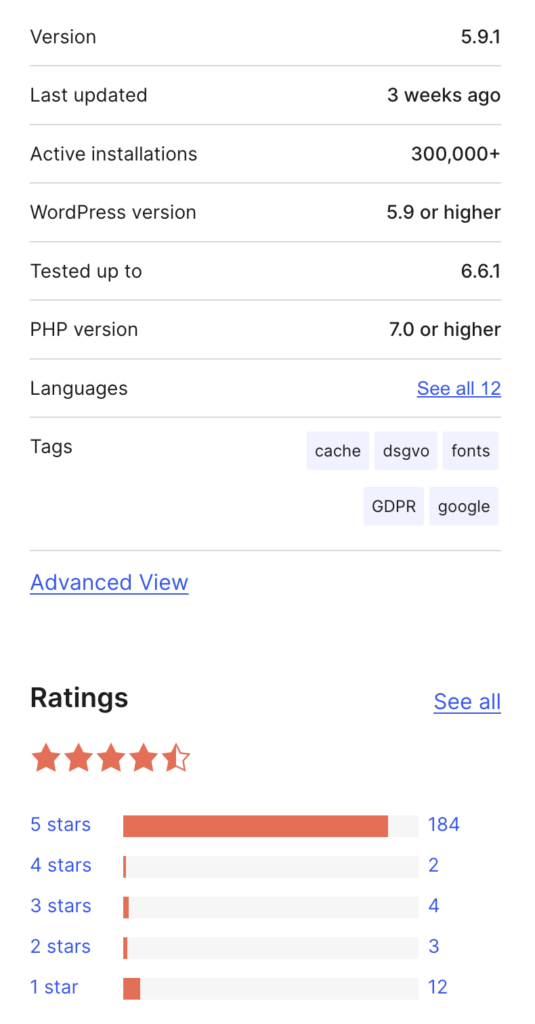How To Evaluate WordPress Plugin Quality
The DIY Quality Check
Are you looking to enhance your WordPress site with new plugins, but unsure how to assess their quality? You’re not alone. With thousands of plugins available, it’s important to choose ones that are reliable, secure, and well-maintained. Unfortunately, there is no objective rating system for WordPress plugins; you have to figure it out on your own. In this guide, we’ll walk you through the six key factors to consider when evaluating WordPress plugins.
Six Key Indicators of Quality
To assess the quality of a WordPress plugin, you’ll need to navigate to its individual product page on WordPress.org. This page contains crucial information that we will use to evaluate the plugin’s reliability and performance. Once there, you’ll find a wealth of data that collectively provide insights into the plugin’s quality. By carefully examining these elements, you can make an informed decision about whether a plugin meets your quality standards and is suitable for your WordPress site.
Below is a typical plugin page from WordPress.org. This screenshot highlights the key areas you should focus on when evaluating a plugin’s quality. Each section provides valuable information about the plugin’s maintenance, popularity, compatibility, and user satisfaction. Let’s break down these critical elements and learn how they can guide your decision-making process.

Last Updated Date
One of the most important indicators of a plugin’s quality is its last updated date. It refers to the most recent time the plugin’s developer made changes or improvements to the plugin’s code and released a new version.
Why it matters: Regularly updated plugins are more likely to be compatible with the latest WordPress core updates, and less vulnerable to security threats.
What to look for: Ideally, choose plugins that have been updated within the last few months or weeks. A plugin that hasn’t been updated in months or years may have compatibility issues or security vulnerabilities, and should be avoided. Proceed with caution.
Number of Active Installations
The number of active installations gives you an idea of how popular and widely used a plugin is. The “number of active installations” refers to the approximate count of WordPress sites currently using a particular plugin.
Why it matters: A high number of active installations often indicates that many users find the plugin useful and reliable. It also suggests that the plugin is more likely to be maintained and updated regularly.
What to look for: While there’s no magic number, plugins with thousands of active installations are generally a safer bet. However, don’t dismiss newer plugins with fewer installations if they meet your specific needs and other quality criteria.
Tested Up To Version
This information tells you the latest WordPress version the plugin has been tested with.
Why it matters: Plugins that are tested with recent WordPress versions are more likely to work smoothly with your current WordPress installation.
What to look for: Choose plugins that have been tested with the most recent, stable version of WordPress. If you’re using an older WordPress version, ensure the plugin is compatible with your specific version.
PHP Version
The PHP version information indicates which versions of PHP the plugin supports.
Why it matters: PHP is the programming language WordPress is built on, and newer PHP versions offer better performance and security. By selecting plugins compatible with recent PHP versions, you ensure your site can leverage these advancements, resulting in a faster, more secure WordPress installation.
What to look for: Opt for plugins that support the latest stable PHP versions. As of 2024, look for plugins supporting PHP 7.4 and above.
Ratings
User ratings provide valuable insights into the plugin’s performance and user satisfaction.
Why it matters: High ratings generally indicate that users are satisfied with the plugin’s functionality, ease of use, and support.
What to look for: Aim for plugins with 4-star ratings or higher. However, don’t just look at the overall rating – read through some of the reviews at lower levels to understand specific pros and cons.
Recent Reviews
A plugin review is a user-submitted evaluation of a WordPress plugin, typically including a star rating and written feedback about the user’s experience. These reviews provide valuable insights into the plugin’s functionality, ease of use, and potential issues, helping other users make informed decisions about whether to install and use the plugin.
Why it matters: Recent reviews indicate that the plugin is still relevant and actively used by the WordPress community. They can also provide up-to-date information about the plugin’s performance and any recent issues that other users have found. The date of the most recent review can also signal how actively the plugin is being used and discussed.
What to look for: Check for reviews from the past few weeks or months. Recent positive reviews are a good sign, while recent negative reviews might highlight current issues with the plugin. Remember that extremes in ratings may not represent the average user experience; consider the overall trend and content of reviews rather than focusing solely on a few high or low ratings
Conclusion
By carefully evaluating these six factors – last updated date, number of active installations, tested up to version, PHP version, ratings, and date of latest review – you can make informed decisions about the quality of WordPress plugins. Remember, a high-quality plugin should be regularly updated, widely used, compatible with recent WordPress and PHP versions, well-rated, and actively reviewed by the community.
Always take the time to thoroughly research plugins before installing them on your site. This extra effort can save you from potential headaches down the road, and ensure that your WordPress site remains secure, stable, and high-performing.



